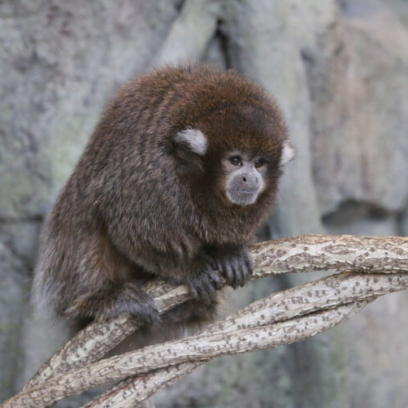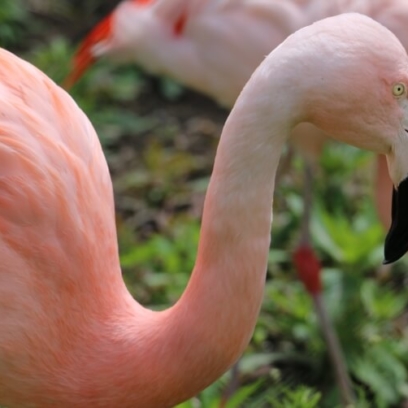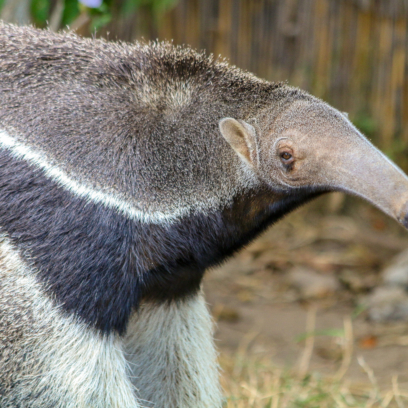Dyeing Poison Frog
Dendrobates tinctoriusGeographic Region: Brazil and Guyana
Did You Know? The female is plumper than the male, but the sexes may be more accurately distinguished by their toes. The dyeing poison frog has four toes on each foot, with enlarged suction cup tips to each toe. In the female these tips are round whereas in males they are heart-shaped.
Details
Height: 1.6 – 2.4 in.
Weight: 0.1 oz.
Tadpoles Eat: algae, and insect larva; Adults Eat: ants, termites, other small insects, spiders
Least Concern
Faces of the Rainforest
Exhibit information
Journey to the Amazon rainforest! Get a glimpse of the rare South American giant river otter. Giant is right! A full-grown otter can reach lengths of up to six feet long!
Wait until you meet the Titi monkeys who mate for life. They can typically be seen sitting or sleeping in pairs with their tails intertwined.
Do you hear that sound? That’s a howler monkey’s call, often heard at a distance of up to two or three miles away!
These animals are just some of the fascinating creatures you’ll discover in the Zoo’s awe-inspiring Faces of the Rainforest exhibit. They’ve joined some of your old favorites like the giant anteater, Chilean flamingos, and white-faced saki monkeys. Whether you’re interacting with toucans and troupials (troupials are a large passerine bird species found in Central America and tropical South America) inside the exhibit’s free-flight aviary or viewing a massive anaconda and stunning tropical fish, this immersive wildlife experience will take you on a journey to the depths of the Amazon Rainforest. Visitors will discover how these diverse species—big and small—create the complex ecosystem on which rainforests thrive, and what we can all do to ensure their survival.
Did you know that 80% of rainforest deforestation is caused by agriculture? Natural habitat is being destroyed to clear land for ranches and plantations. But simply by choosing to purchase sustainably grown products, you can make a difference.
One way to help protect the rainforest is to “Follow the Frog”! Just look for the Rainforest Alliance seal on products ranging from bananas and chocolate to coffee and flowers. Click HERE for a list of Rainforest Alliance certified products




